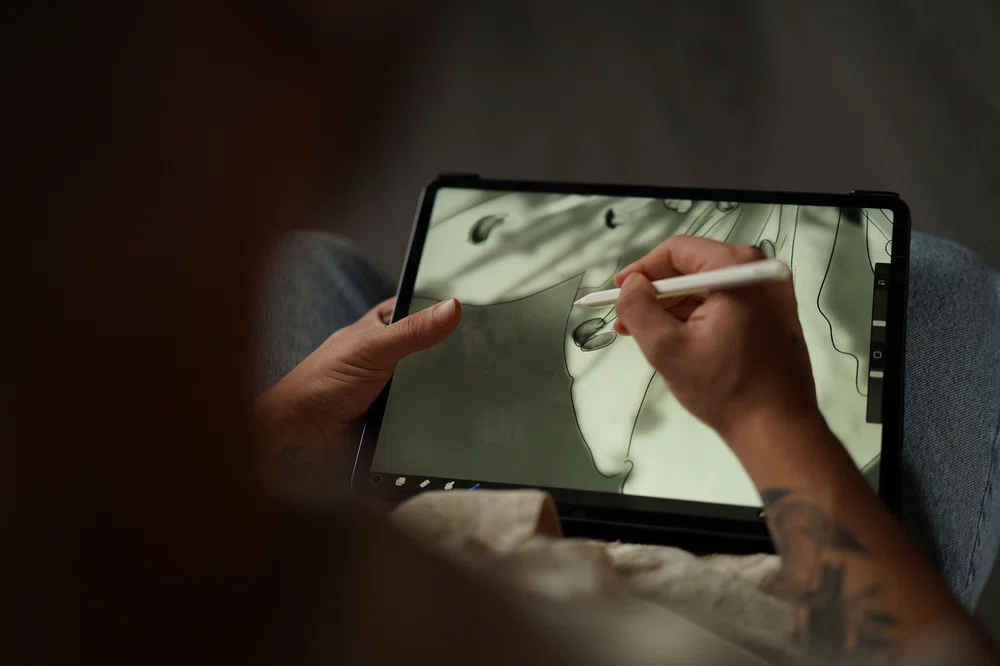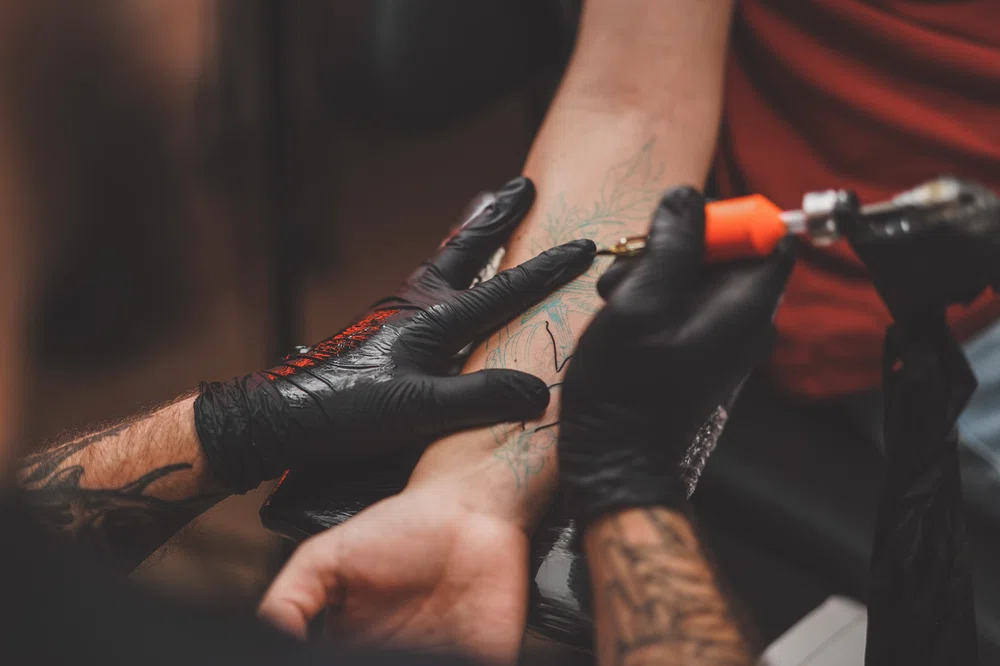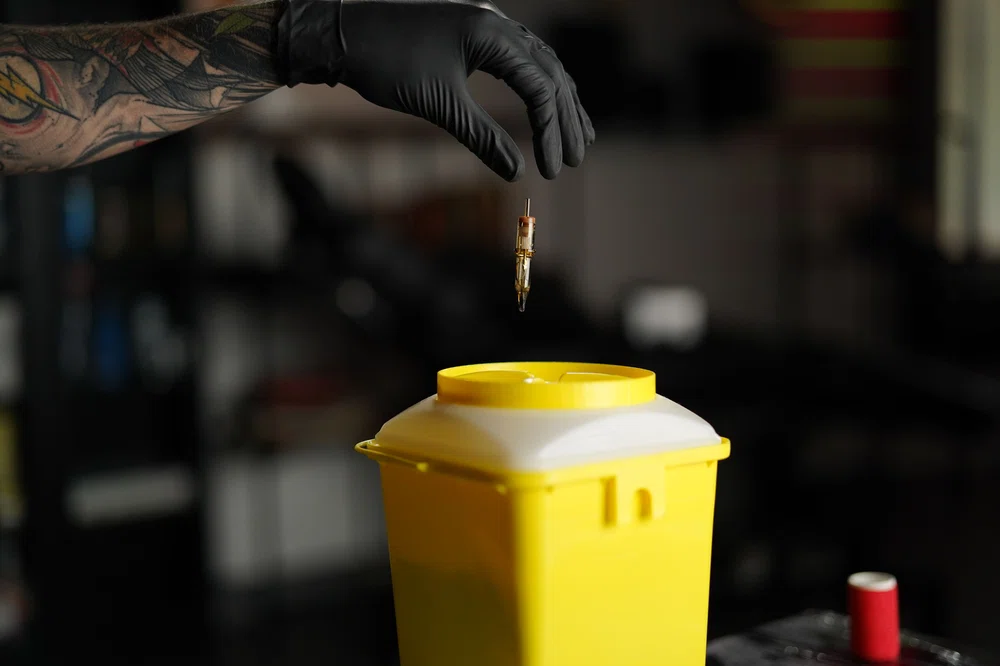What do I need to be a professional tattooist?
Discover the skills you can't skip to dedicate yourself to tattooing
28 February 2024
Reaching the pinnacle of your career is quite a challenge; it takes going through a series of key stages to establish yourself as a tattoo professional, from mere interest in this art form to making it your lifestyle.
Today we'll delve into the journey of living entirely off your art on skin... What do you need to achieve such a feat?
Spoiler alert: It takes more than knowing how to tattoo.
Being a professional tattoo artist entails much more than that. We could say it's a formula that requires several components.
The Three Masteries: methodology, design, and technique, are the main elements.
But you must also add:
- Knowledge and compliance with health standards.
- The experience you accumulate through practice.
- Plus all the effort, time, dedication, and willpower you can muster...
No, it's not easy. But when you focus on the goal, nothing can stop you. And if others have achieved it, why wouldn't you?
If you're reading this, congratulations! You've already taken your first step.
Now, let's step back for a moment...
What are these Three Masteries?
The Three Masteries of Professional Tattooing
The first pillar: Methodology.
This mastery is often overlooked, it's usually thought to be unimportant or even some may not have heard it mentioned, but let me tell you a secret:
It's more essential than you imagine.
Let's take it as the personal manual of every professional, whose purpose is to guide you correctly so you can make all the decisions about what to do before, during, and after tattooing.
Methodology helps you lay the foundations and conditions of your profession, fully adapted to your needs and those of your client.
It guides you on:
- Artist-client relationship: Trough where do you communicate? What instructions do you give them? Will you follow up on the tattoo healing process? What if your client can't stand the pain or is too nervous?
- Working tools: Which tattoo machine suits you and your style? Do you prefer coil or rotary? Will you use the same machine to tattoo a shoulder or a knee? Acrylic or vegetable inks?
- Session duration: Will they be 2 hours, 3, or 10? ... Just kidding!, don't even think about 10.
- How you promote your tattoos: Classic brochures or social media? In the case of social media, how often do you post? What aesthetic do you choose? Do you do giveaways and discounts?
- Method you use to design your tattoos: iPad or paper? How many modifications do you offer?
- Which technique you use: Do you start the tattoo from the bottom, or what's the first thing you do? Do you hold your breath when doing lines? What voltage do you set the machine to? How much do you pull the needle out of the tip?
All these questions (and more) respond to your Methodology.
And, if you weren't aware yet, asking yourself as many questions as possible to start looking for what best suits your work is fundamental.
That's why, to help you find the right answers, within our MasterCourse: Realistic Tattooing, Coreh López explains his unbreakable rules.
The second pillar: Design.

By this, we don't just mean design, but everything involved in its elaboration, from the initial idea, whether yours or your client's, to the creation and application of the stencil.
It's a process that involves seeking references and different sources of inspiration, making sketches, deciding on design and editing applications, learning about graphic composition, among other things...
And here we must clarify something crucial:
The master key to connecting with design is DRAWING. This tool is essential for almost all tattoo professionals.
Why "almost"?
Because, for example, to make Flash Tattoos, Blackout tattoos, or Lettering, there's no need to be Picasso. Still, if you really want to make a name for yourself as a tattoo artist, you must keep in mind that...
Learning how to draw for tattooing never hurts, as it helps you to:
- Make changes that the client asks for, such as adding or removing details.
- Create well-composed, balanced, and harmonious tattoos.
- Adapt it to any area of the body and integrate it correctly with other tattoos.
- And stand out with unique, original, and distinctive designs.
Overall, if you master the area of design, you can offer a portfolio of tattoos 100% of your own, which sets you apart from other artists thanks to developing your own tattoo style and, ultimately, helping you attract more clients.
Let's move on to the last of the Masteries, shall we?
The third pillar: Technique.
We refer to the tattooing process, nothing more and nothing less than the way lines, fillings, colors, and shadings in tattoos are correctly applied.
A tattoo artist who incorporates an excellent technique achieves:
- Avoiding blowouts in tattoos.
- Super-solid fillings.
- Well-healed shadings.
- Having a surgeon's precision.
While Methodology and Design are vital, this third pillar is not left behind because, of course... to tattoo, you have to know how to tattoo well.

Now that you have a general overview of the 3 Masteries, let's quick review the health standards.
Sanitary Standards for Tattooing
Health standards also occupy a fundamental place in the profession of a tattoo artist.
If you have become interested in practicing this craft, you have probably already read or heard something about this.
These are the rules dictated by various legal institutions for the practice of tattooing, with the aim of preventing and protecting health, both of clients and of those who tattoo.
And here we enter a complicated terrain because this information varies depending on the country, region, province, state, or wherever you are.
So, this is a task you’ll have to research on your own.
However, you must never forget that both your own health and that of the client are in your hands, so your goal should always be to minimize any risks as much as possible.
That being said, and to give you a little orientation, these are the requirements in most countries:
- Certification accrediting knowledge about the processes of cleaning, sterilization, and disinfection of the entire work environment, equipment, materials, and even clothing, as it could get stained with bodily fluids during the process.
- Health card.
- Complete vaccination certificates.
- Sometimes, an official tattoo artist title, which, depending on the location, can be obtained in different ways.
In broad strokes, these are the basics required to tattoo professionally and safely.
We intend to start guiding you, but it's up to you to thoroughly investigate how to comply with all the required standards.
Remember that being a professional means being aware and responsible. And a beautiful tattoo is useless when it's not done under the necessary conditions.

Recapping:
- You now know what the Three Masteries are and the importance of each of them.
- We've informed you about the health standards you must comply with.
What's missing from the formula?
Right! Effort, time, dedication, and willingness.
We throw in all the components, mix them well, and voilà! A professional tattoo artist 2.0. is born.
Well... saying it is much easier than doing it, but difficult doesn't mean impossible!
Wow, you've made it this far? Then you're truly interested in becoming a professional tattoo artist and living off your art. So, maybe it's time for thinking about the second step: Training with experienced tattoo artists.